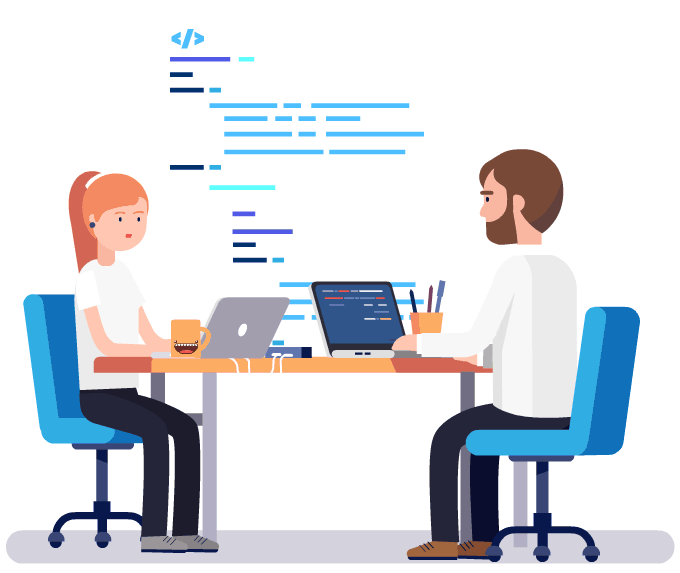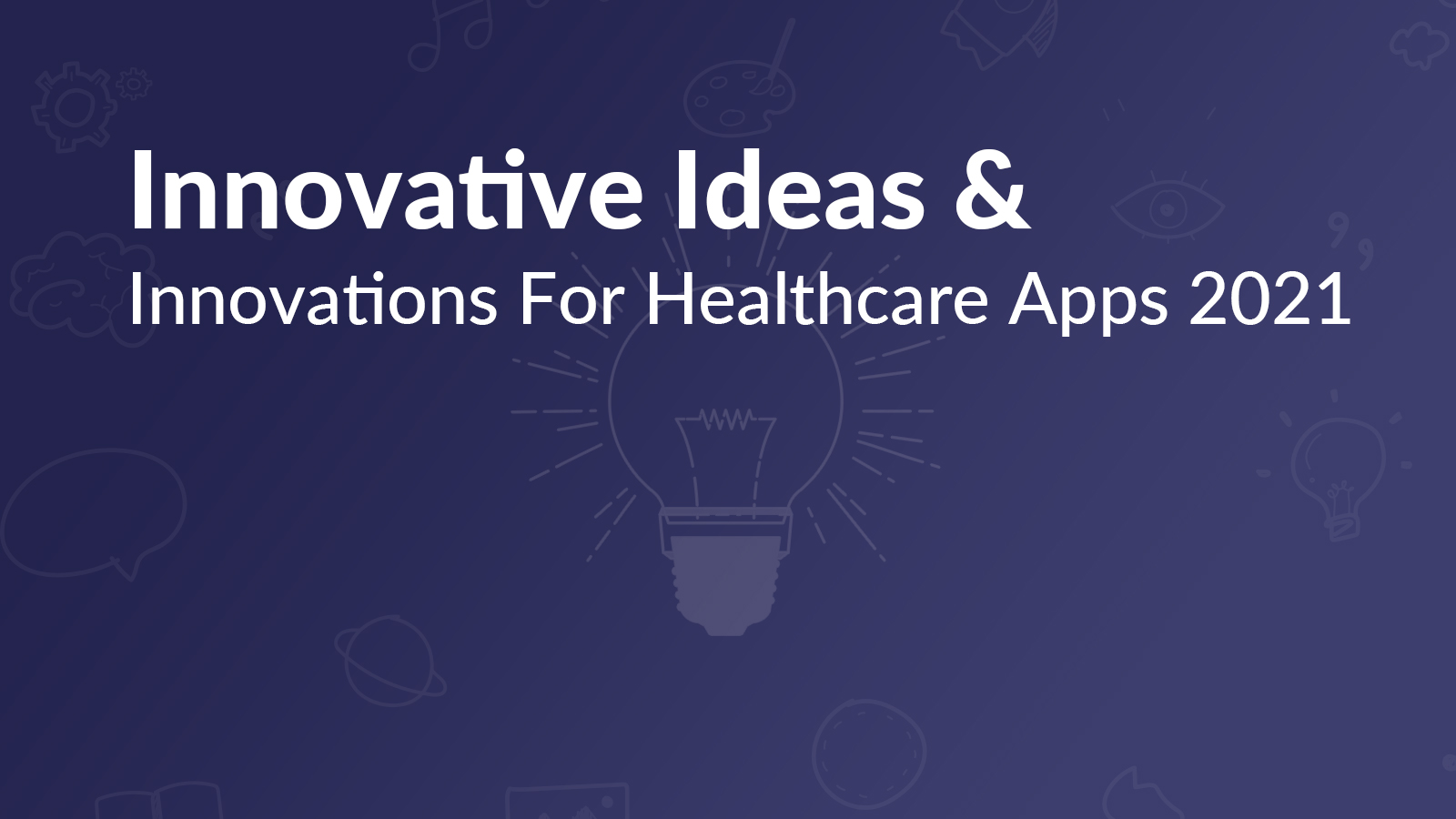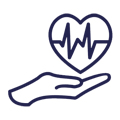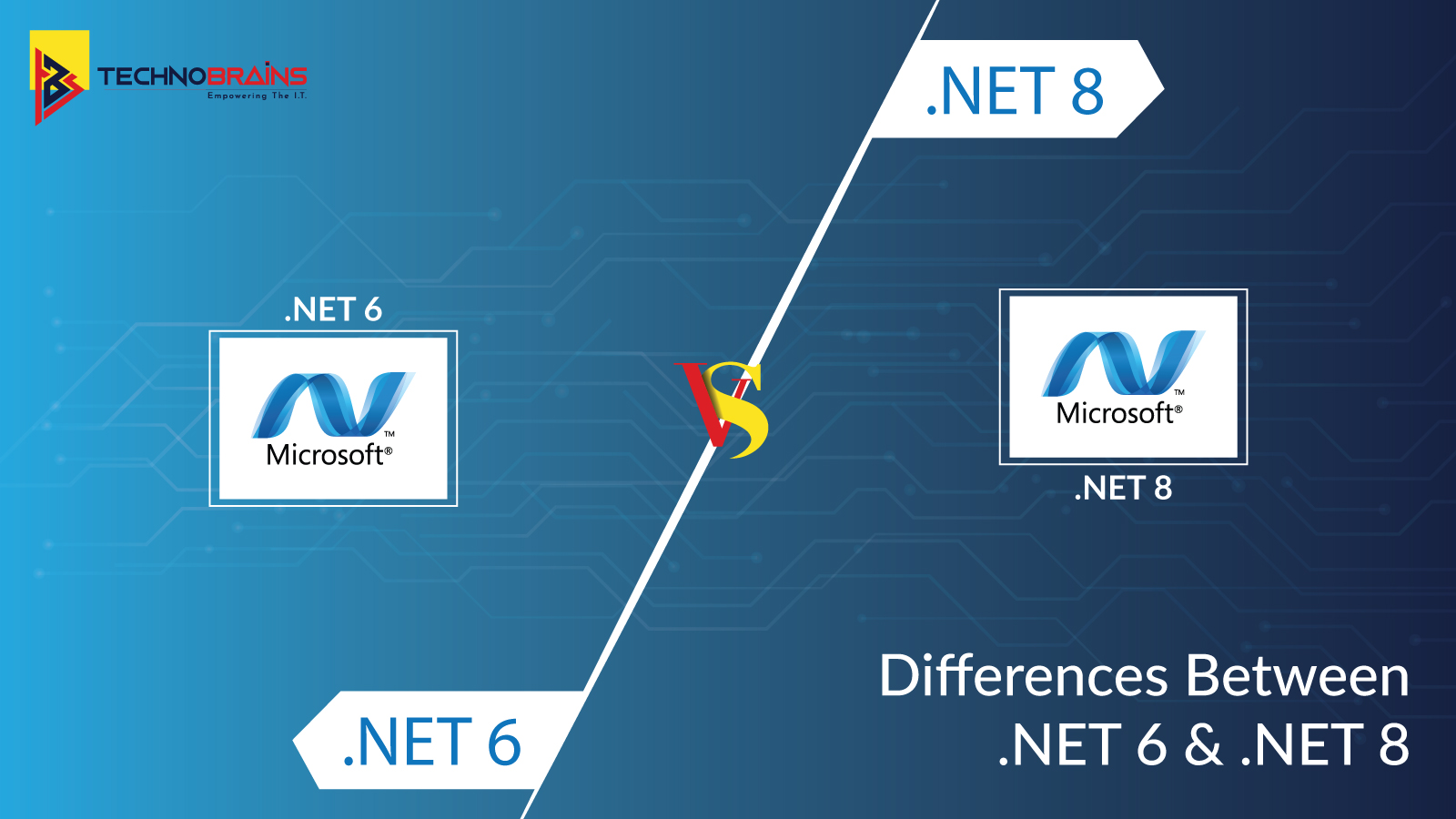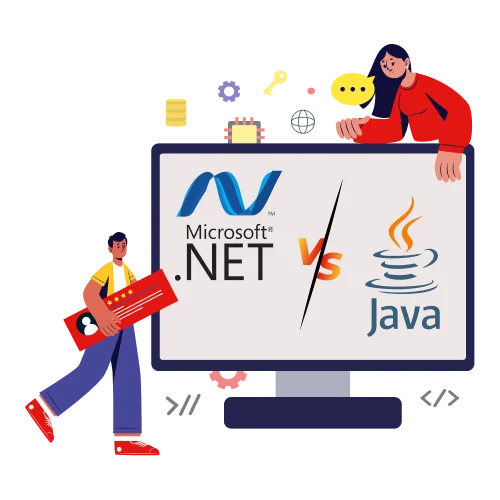Get 40 Hours Free Developer Trial
Test Our Developers for 40 Hours at No Cost - Start Your Free Trial →
Nowadays, all use smartphones and other mobile devices to solve most of the problems in the everyday world. As we move into the COVID-19 reality, turning to remote services has become convenient and necessary. Initially seen as a traditional area based on human interaction, medical records are now accessed digitally and saved lives.
If you run a healthcare company, you probably know how challenging it can be to keep up with digital transformation. You must surely be thinking of launching your own Healthcare App seeing the surge in Healthcare Apps nowadays. Isn’t?
A difficult part of implementing new technologies is getting your team on board with change and deciding which technologies are worth investing in.
Adopting a flexible, risk-taking mindset is imperative if we want to embrace the digital era fully.
The key to disruption is moving away from outdated business processes and trusting that disruption will yield great results. We’ll recap briefly before moving on.
Despite that, the U.S. healthcare market is enormous, with 5.7 trillion dollars estimated to be spent by 2026 on healthcare. Your business can still grow if you become well-versed in digital technology. You need a comprehensive view of the modern healthcare landscape before you can transform your standard practice into a thriving, digital machine in 2021.
Virtual reality tools, wearable medical devices, 5G mobile technology, and telehealth are some of the technology that makes patient treatment better. Artificial intelligence-powered systems can streamline doctors’ workflow, on the other hand.
What is Healthcare Apps?
Healthcare apps help people better manage their physical and mental health and aid healthcare professionals in their efforts to improve patient care. ‘Healthcare apps’ Wearable gadgets and mobile devices are used to monitor, diagnose, and treat ailments in physical health apps. Tracking and improving mental, physical, social, and spiritual aspects of one’s well-being are the primary goals of mental health applications.
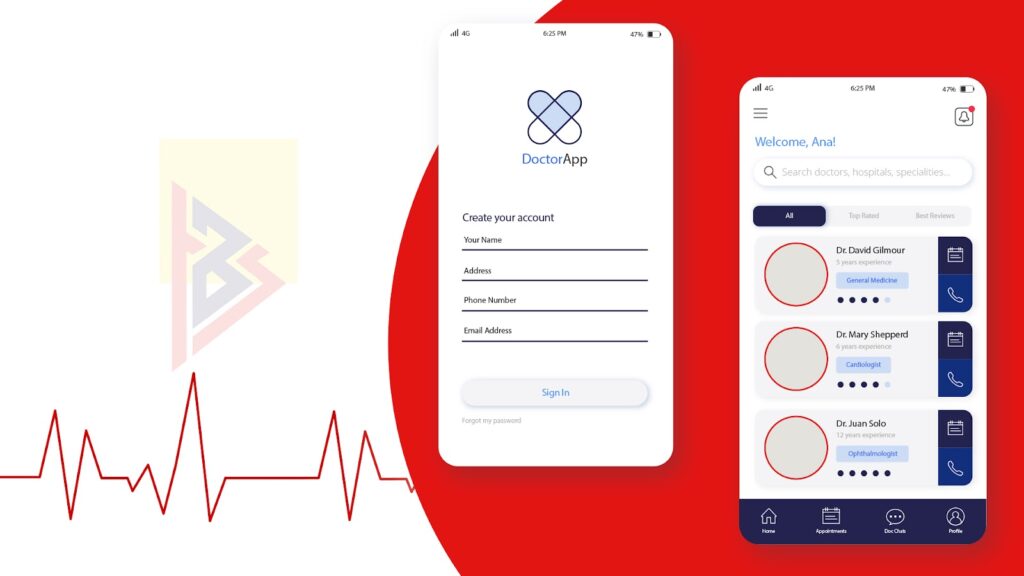
Exploring the Healthcare Digital Transformation in 2021: An In-Depth Analysis
1) The rise of on-demand healthcare (why patients want healthcare on their schedule)
A common understanding of ‘on-demand’ is that consumers want things when they want them, whenever they want them, and wherever they happen to be. Due to busy schedules, patients seek on-demand healthcare in the healthcare industry. It is possible to monitor patients outside of the hospital, watch vitals, or even analyze medical photos for physicians using mobile health apps
The past decade has simply seen an increase in mobile populations. Statistically, five out of ten web browsing sessions occur on mobile devices globally today (52%, to be exact).
It is one of the first rules of content marketing to identify where your targeted audience gathers, i.e., mobile platforms, and contact them through those platforms. With 77 percent of Americans owning a smartphone, this isn’t surprising.
You can see how digital transformation in healthcare can help when you consider there are more than four billion Internet users on the planet.

In DMN3, the following reasons explain why consumers seek medical information online:
- Doctors who conduct research constitute 47%
- Medical research hospitals and facilities make up 38%
- 77% percent make medical appointments
Online marketplaces like Nomad Health, which connects doctors directly with hospitals for short-term work, are making it easier for physicians to provide healthcare on-demand for specific clients when their schedules, talents, and expertise match. As a result of the digital transformation of the healthcare industry, doctors become on-demand healthcare providers to meet their patients’ changing needs better.
2) The importance of big data in healthcare
Social media, eCommerce, and financial transactions provide information about a business that is aggregated, and patterns and trends are identified.
Big data has many benefits for the healthcare industry for maintaining medical records, including:
- Reducing Medication errors – by analyzing patient health records, the software can alert health professionals and patients if there are any inconsistencies between health and drug prescriptions.
- It is estimated that as much as 28% of people who step into emergency rooms are returning patients, who can be identified using big data and prevented from returning.
- More Accurate Staffing – hospitals and clinics can use big data’s predictive analytics to estimate future admission rates, which allows them to place their staff appropriately for patient care. When a facility is understaffed, this saves money and decreases the wait time in the emergency room.

Pharmaceutical and healthcare companies should invest in data organization if they hope to reap these benefits. Therefore, companies need to invest in analytics experts who can crunch the data to not only identify areas of weakness but also help them better understand their market.
People in the pharmaceutical industry are likely to understand the constant changes in marketing dynamics. Pharma companies believe that big data is most helpful in helping them understand the market.
Identifying your ideal consumers is easier with a better understanding of the market. One way to do this is to create a customer persona, which consists of demographic information on what your prospects need and want, and how to reach them.
3) Treatment of patients with virtual reality
Back then, claiming that a device like a video game could reduce pain would have been met with blank stares from many people. However, VR (Virtual Reality) is the pièce de resistance of digital transformation in 2018. The myriad of applications of the machine is revolutionizing how we treat patients.
As an example, let’s take pain management. In the past, doctors handed out opioid prescriptions like candy. Is it a migraine? Pain after surgery? The following medications contain OxyContin, Vicodin, and Percocet. Because of this, the country currently faces the most severe drug crisis in its history, a $78.5 billion economic burden.
Here’s the thing: millions of people continue to struggle with chronic pain. The CDC estimates that 50 million adults in the U.S. suffer from chronic pain. Compared to drugs, VR is safer and more efficient for them.
Virtual reality’s medical capabilities are just a fraction of what it can do. Other benefits include training doctors on virtual-reality simulations or planning complex procedures. In addition to motivating wearers to exercise, virtual reality headsets can also help children with autism learn how to navigate.
VR is getting much attention right now, from startups to pharma giants. Virtual and augmented reality are likely to reach $5.1 billion in healthcare by 2025. This technology is very important for healthcare companies that are planning their digital marketing strategies.
One of the benefits of virtual reality is that it allows you to better understand your customers or their needs by virtually engaging them.
4) The growth of wearable medical devices
In addition, as part of the digital transformation in healthcare, companies are collecting their health data from medical devices, such as wearable technology.
Patients used only to visit their doctors when something was wrong and only went for physicals once a year. New methods for preventing and maintaining patients’ health are being developed, and patients request more health-related information.
Therefore, healthcare organizations are becoming proactive by acquiring wearable technology devices that can monitor high-risk patients to predict whether they will suffer a significant health event. According to a recent report, approximately $27 million will be spent on wearable medical devices by 2023, increasing from just under $8 million in 2017.
Below are some of the most common devices of this type:
- Sensors for monitoring heart rates
- Trackers for exercising
- Monitors blood sugar levels with sweat meters used by diabetics.
Asthma and COPD patients often use oxygen meters to monitor the amount of oxygen in their blood. Pharmaceutical and healthcare companies should invest in data organization if they hope to reap these benefits. Therefore, companies need to invest in analytics experts who can crunch the data to not only identify areas of weakness but also help them better understand their market.
People in the pharmaceutical industry are likely to understand the constant changes in marketing dynamics. Pharma companies believe that big data is most helpful in helping them understand the market.
Identifying your ideal consumers is easier with a better understanding of the market. One way to do this is to create a customer persona, which consists of demographic information on what your prospects need and want, and how to reach them.
5) Treatment of patients with virtual reality
Back then, claiming that a device like a video game could reduce pain would have been met with blank stares from many people. However, VR (Virtual Reality) is the pièce de resistance of digital transformation in 2018. The myriad of applications of the machine is revolutionizing how we treat patients.
As an example, let’s take pain management. In the past, doctors handed out opioid prescriptions like candy. Is it a migraine? Pain after surgery? The following medications contain OxyContin, Vicodin, and Percocet. Because of this, the country currently faces the most severe drug crisis in its history, a $78.5 billion economic burden.
Here’s the thing: millions of people continue to struggle with chronic pain, and extremely difficult to come for in-person visits. The CDC estimates that 50 million adults in the U.S. suffer from chronic pain. Compared to drugs, VR is safer and more efficient for them. Treat many disorders with VR technology ranging from anxiety to post-traumatic stress disorder.
Virtual reality’s medical capabilities are just a fraction of what it can do. Other benefits include training doctors on virtual-reality simulations or planning complex procedures. In addition to motivating wearers to exercise, virtual reality headsets can also help children with autism learn how to navigate.
VR is getting much attention right now, from startups to pharma giants. Virtual and augmented reality are likely to reach $5.1 billion in healthcare by 2025. This technology is essential for healthcare companies planning their digital marketing strategies.
One of the benefits of virtual reality is that it allows you to better understand your customers or their needs by virtually engaging them.
6) The growth of wearable medical devices
In addition, as part of the digital transformation in healthcare, companies are collecting their health data from medical devices, such as wearable technology.
Patients used only to visit their doctors when something was wrong and only went for physicals once a year. New methods for preventing and maintaining patients’ health are being developed, and patients request more health-related information.
Therefore, healthcare organizations are becoming proactive by acquiring wearable technology devices that can monitor high-risk patients to predict whether they will suffer a major health event. According to a recent report, approximately $27 million will be spent on wearable medical devices by 2023, increasing from just under $8 million in 2017.
Below are some of the most common devices of this type:
- Sensors for monitoring heart rates
- Trackers for exercising
- Monitors blood sugar levels with sweat meters used by diabetics.
- Asthma and COPD patients often use oxygen meters to monitor the amount of oxygen carried in their blood.
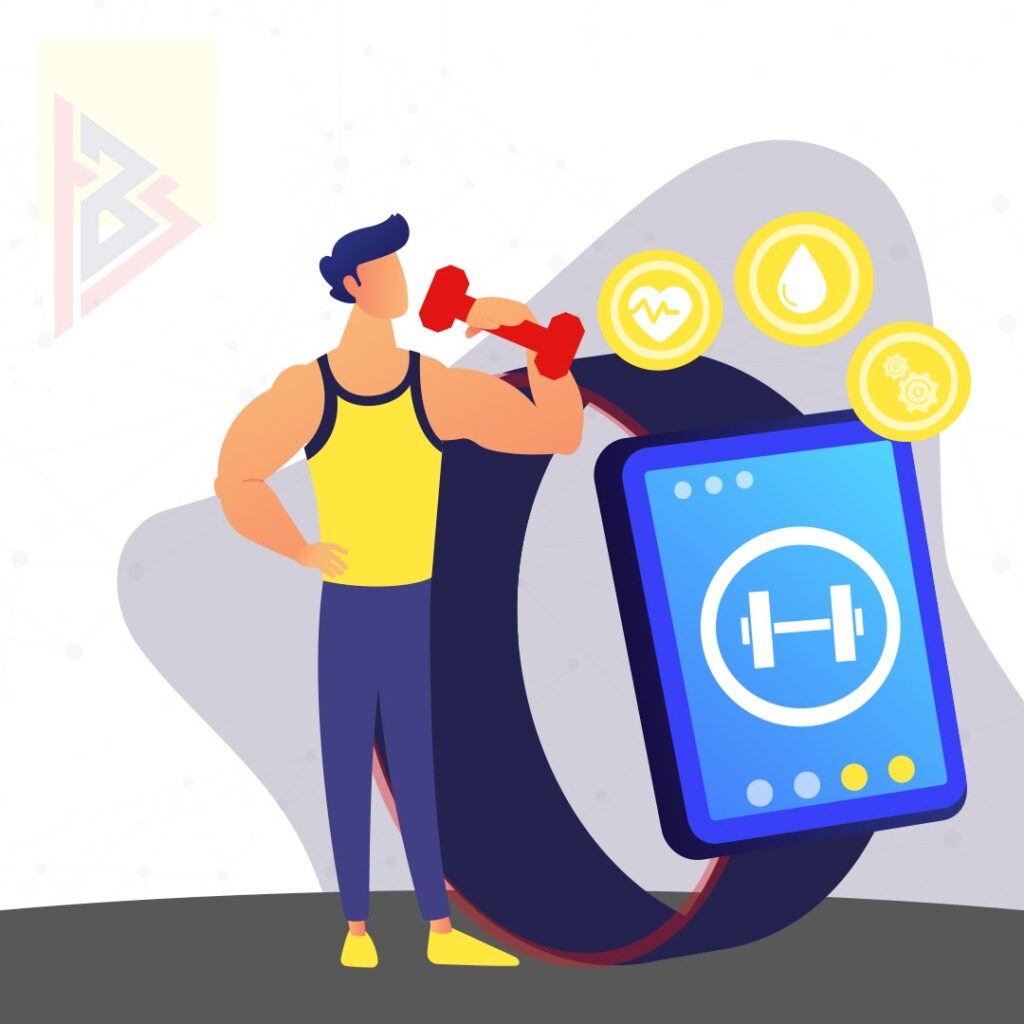
Investments in Healthcare Apps offer the following benefits to healthcare professionals:
- Gives patients a sense of ownership in improving their health – medical devices give patients a sense of ownership in improving their health.
- Wearable devices can provide insurers with more accurate information about patients’ risks for illness.
- Insurance incentives – patients who improve their health by taking preventive measures will have their premiums lowered.
- The latest medical devices can provide gamification opportunities for users to set fitness goals and compete with one another.

Healthcare companies can also save money by implementing wearable technology. The U.S. healthcare system could save around $7 billion annually by using health apps and wearables for prevention. Medical device director Christy Foreman said that the FDA feels that a balanced approach to mobile medical apps is critical to supporting ongoing innovation while ensuring adequate patient protection.
The mHealth Apps Market

Long before the pandemic, healthcare apps did well and were worth a lot. According to research conducted in 2017, the global health app market was valued at roughly 10 billion U.S. dollars. Over 31 billion dollars will be generated in the market by 2025, according to analyst estimates.
Approximately half of the predicted $206 billion in the digital healthcare industry is predicted to be generated by the mHealth market by 2021, according to Statista.

This is according to the website research2guidance.com
- Medical apps for doctors and patients are available in AppStore catalogs of over 95,000;
- A whopping 45% of mHealth applications are not free
- Approximately 15% are targeted at healthcare professionals (CME, PRM, healthcare management);
- About 5 million free and 300,000 paid mobile health apps are downloaded daily.
Now that pandemic reality has forced the rise of health-supporting technologies; it is not surprising that healthcare mobile apps are becoming more popular. MHealth was already becoming more entrenched even before this catalytic event. As compared to earlier days or pre-pandemic days, when hardly any free app on healthcare was available, now you see many hospitals, and direct healthcare professionals trying to reach their patients through their health free apps.
Before the pandemic, factors driving market growth in healthcare mobile applications included expanded mobile device use, more accessible internet connections, the expansion of digital healthcare services in general, and users’ increased awareness of fitness, wellness, and technological advances.
A growing number of investors also take an interest in this market due to the massive increase in mobile device use. Biotechnology attracted $18,285B in funding, followed by Biopharma and Healthcare.
What is mHealth?
Mobile healthcare software app development includes creating digital services for the healthcare industry; on the other hand, the term mHealth generally means using mobile devices and wireless technologies to encourage healthy lifestyles. Besides serious medical care, the term encompasses patient-doctor relationships, medical data, and health government apps.
Health apps that track, guide, and bolster people’s physical condition offer the best examples of mHealth technologies. Such Apps are a boost to the economy as well.
Most mobile healthcare apps can be divided into three broad categories: hospitals, medical professionals, and patients. Mobile healthcare apps work on all kinds of mobile devices or smartphones. So, all the apps work perfectly on all Android and iOS devices, so all users are covered.
Healthcare Apps For Institutions
Healthcare organizations are increasingly using mobile solutions to improve interoperability and care coordination. More often than not, hospitals and physician offices now manage their billing, appointments, scheduling, and inventory with mobile services, thus improving workflow management.
Clinical assistance applications with access to Electronic Medical records and Electronic Health Record systems can help manage sensitive health information while boosting accessibility and security.
Healthcare Apps For Healthcare Professionals
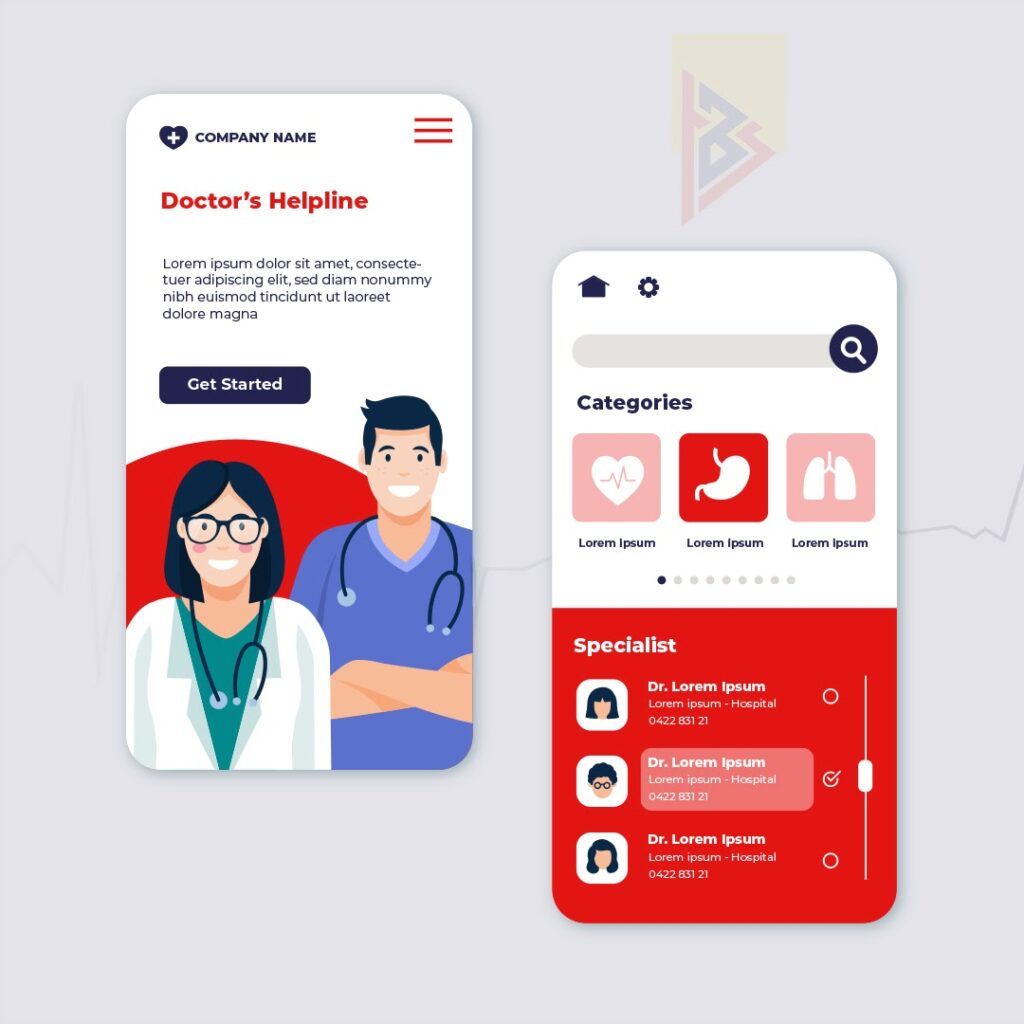
It is challenging for health professionals to maintain a high degree of knowledge in an ever-evolving environment. Remote monitoring, such as real-time insights, can ensure more reliable results and reduce human error. Real-time data sharing lets practitioners spot symptoms early, establish better treatment plans, and provide better comprehensive care
Medical professionals use the following mHealth apps the most:
- Tracking apps for patients’ health
- Remote diagnostics and mobile apps (such as doctor-on-demand),
- Lists of symptoms, medical publications, reference databases,
- Networking apps (so that medical professionals from all over the world can ask leading experts for recommendations),
- Medical examination apps
- Communicating and managing appointments.
Medical Apps For Patients
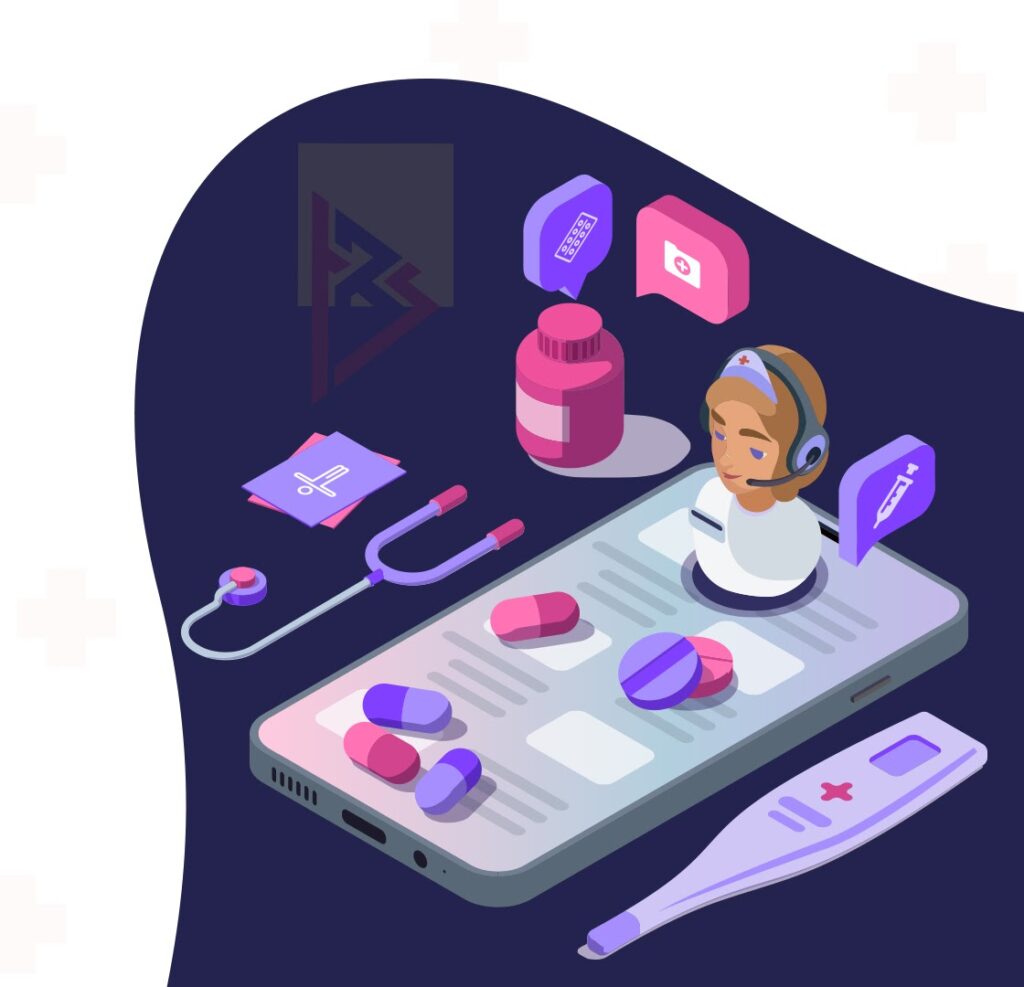
With each passing year, wearable and mobile health devices grow in popularity. Patients and consumers most commonly use the following apps:
- The use of patient education apps (patient portals) – for monitoring information that is useful to patients
- The app includes health-related reminders (such as water intake) and tracking apps.
- Preventive, diagnostic apps
- Fit, wellness, and cardio apps for a healthy lifestyle
- Apps for managing chronic conditions such as diabetes, blood pressure, and cancer
- Mental health apps – stress relief apps, meditation apps, sleep apps
- Apps for tracking food, exercising, and losing weight
- Menstrual cycle calendars, pregnancy apps, or feeding apps for women
What’s Next in the HealthCare Industry Related to Healthcare Apps?
Although the healthcare industry has seen countless breakthroughs and important discoveries over the years, it is still relatively slow-moving.
Combining these two very different environments – the slow-moving healthcare system and the disruptive, fast-moving digital ecosystem – could be a daunting task. However, despite the current wealth of technological solutions, a real revolution is yet to come. COVID-19 will lead to a greater degree of positivity than it would otherwise have.
Mobile Technology Trends in Healthcare Apps

AI
Mobile health can benefit greatly from AI, and this is no surprise. Healthcare digital transformation is already assisted by artificial intelligence and services are perceived differently today as a result. AI’s ability to transform the healthcare industry is a significant development in healthcare.
We should expect significant AI breakthroughs, especially self-examination and other remote procedures. The post-pandemic and pandemic world is likely to be more profitable when solutions reduce the costs of visits to clinics and patient-doctor contacts.
Big Data
Human health requires a multidimensional approach across several levels of issues and impairments. Each of these levels requires the collection, storage, retrieval, linking, manipulation, and analysis of a great deal of data.
EHRs (Electronic Health Records) attest to the increasing importance of technology in managing and using such healthcare data, however, slow their adoption may have been.
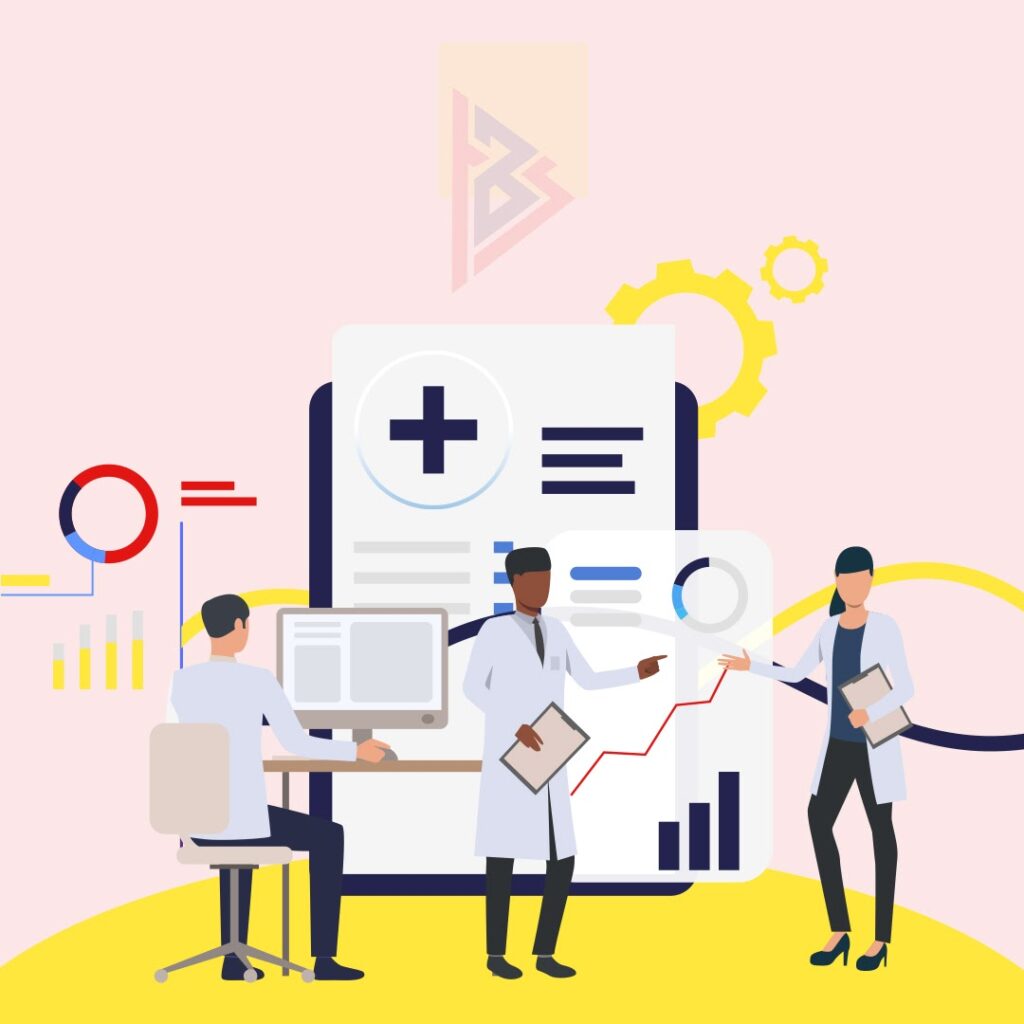
Electronic Health Record (EHR) – an AI perspective
The industry’s use of Big Data has the potential to benefit other areas of healthcare as well. Big Data healthcare technology may make up the most sought-after technology of the near future due to the possibility of reducing medication mistakes, boosting reactive or preventive care, reducing hospital waiting times and costs, managing resources, and predicting diagnoses.
The Journal of Medical Internet Research reported that social aspects of healthcare apps boosted patients’ capacity to stick with treatment plans and adopt better habits.
Blockchain
Healthcare organizations are concerned about the security of these massive amounts of data. A breach between 2009 and 2017 exposed 176 million patient records, a cause for concern.
Keeping important medical data safe and secure is currently the most widely used blockchain healthcare application. In summary, blockchain keeps a tamper-proof and transparent record of all patient data that is incorruptible, decentralized, and decentralized. The decentralized nature of Blockchain makes it a promising technology for developing healthcare apps.
IoT
Healthcare also stands to benefit significantly from the Internet of Things. Research from Aruba Networks in 2017 showed that most healthcare organizations have already adopted IoT devices in their facilities. The range of devices will continue to increase dramatically in the coming years.
Consider the “intelligent pill”, a promising and notable innovation. Patients can access data on their vital functions using the pill’s portable sensors, which gather data and transmit it to a mobile phone app.
Adapting medical devices to IoT will have a significant impact. Medical devices on mobile platforms and portable systems will record data and perform particular functions according to commands or recognized conditions.
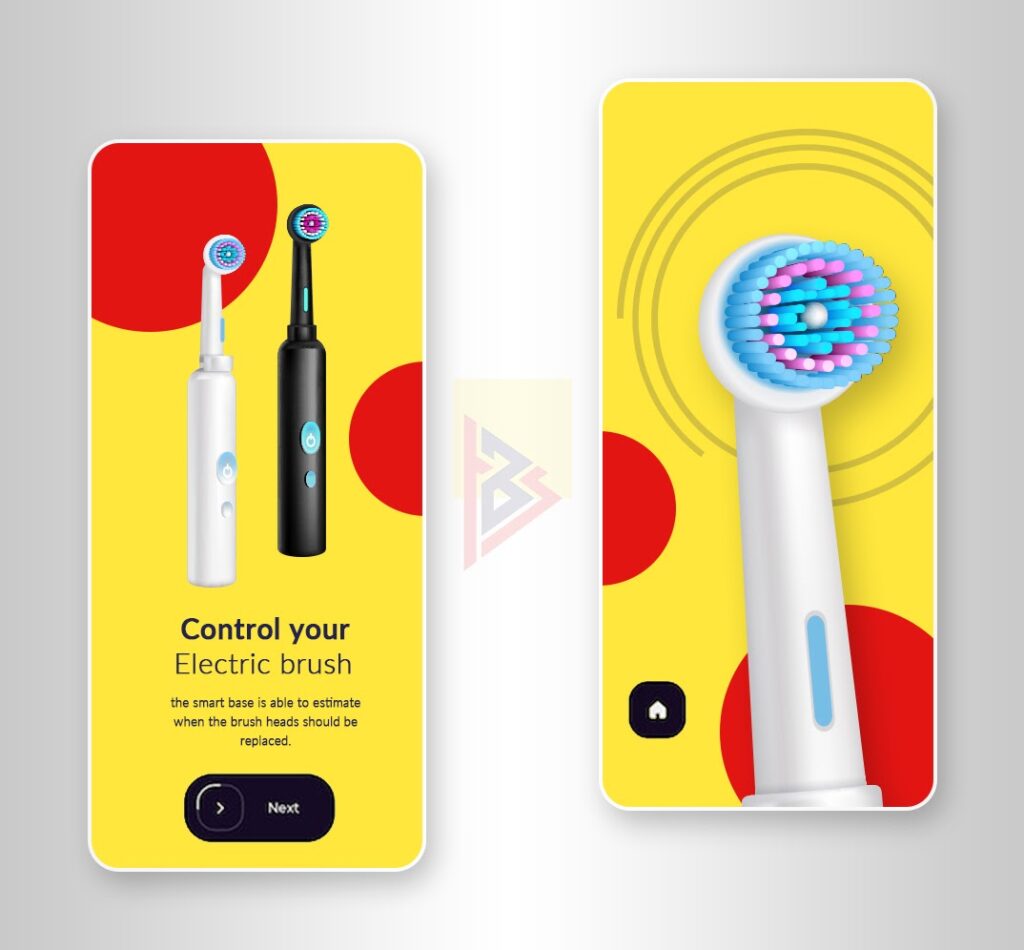
AR/VR
The healthcare market is experiencing a meteoric rise, with market value expected to reach US $4,057.144 million by 2025 from US $779.994 million in 2019. Several medical experts are turning to augmented reality (AR) and virtual reality (VR) technologies due to their many applications, including surgery preparation assessments and minimally invasive surgery and rehabilitation.
AR/VR is influencing many areas of healthcare, but their natural rise is yet to come. The potential of VR to improve surgical outcomes is evident from its extensive applications in 3D operating room simulations and virtual training for surgeons.
Additionally, AR/VR scenes enable patients to resolve trauma more efficiently in a safe environment, making these technologies beneficial for chronic pain management and mental health treatment.
Voice
Retail, customer service, and telemarketing are transformed by voice recognition and communication. According to Gartner, 30% of web browsing will be done by voice by 2030.
Voice technology will also benefit the healthcare industry. Healthcare apps will primarily use voice technology.
The virtual healthcare assistant will assist with the improvement of medical plans and speeding up medical assistance (for example, it will ask questions such as “Will they take the medication?” and “How are the side effects of the medicines?”).
In addition to reducing the burden of manual documentation, smart listening devices could also help reduce it. Voice mobile apps can create encounter notes in under 45 seconds to transcribe data received by dictation. Healthcare Voice User Interfaces (HCVUIs) are in a ripe position to develop.
Cloud
Cloud computing in healthcare is projected to gain USD 64.7 billion in market value by 2025, up from USD 28.1 billion in 2020. The COVID-19 pandemic has reinforced this trend.
The importance of cloud computing to the healthcare industry has recently come into focus, though it has long gone beyond the global enterprise. Thus, there is still a lot of potential for healthcare apps.
Cloud Computing supports many healthcare applications. Cloud services, for instance, allow healthcare providers and their patients to access important information more quickly.
For supporting mHealth mobile apps use Cloud services. Healthcare providers can store data in the cloud and access it from anywhere with the help of computing power.
In addition, cloud computing and storage will be available on-demand to medical facilities as Infrastructure as a Service.
Wrapping Up
In addition to improving medical practices and providing patient care, healthcare apps and other apps in mental healthcare can provide a more customized experience. While coming up with ideas for healthcare and mHealth app development, keep a close eye on and embrace these innovative technologies.
Health and wellness services have never been more competitive, resulting in better results and cheaper consumer costs. Reducing access time, enhancing preventive care, and removing the need for additional fuel are all advantages of remote healthcare and telemedicine.
How Can TechnoBrains Help in Healthcare Apps?
It takes a team to make a product viable, and at TechnoBrains, we understand this. You can minimize the risk of making mistakes at the beginning of the project with an experienced healthcare mobile app development company, and in the end – save money and get an excellent service.
The development of healthcare apps is one of our top priorities since we’ve been building apps since 2008. Healthcare apps should be easy to use, intuitive, and functional. We have a team of proficient designers and developers.
What kind of healthcare app would you like to see? Do you have any plans to launch a medical software company? Find out more about our custom healthcare software development services and receive a free consultation. We can discuss whatever concerns you.
FAQ
Using mobile prescribing apps, we store patients’ allergy, biometric, and prescription data. We simplify the management of prescriptions and reduce medication errors through our apps. Our company develops apps that track and monitor individuals’ physical activities.
Patients mostly use physician mobile apps for scheduling appointments (70%), viewing lab results (52%), and requesting prescriptions (40%).
Health apps are essential to the trend of using mobile health (mHealth) programs in health care because they’re incredibly accessible to patients from home and while on the go.
The cost of simple digital health apps will range from $45,000 to 80,000, based on our experience in mobile app development. It may cost from 80,000 to 120,000 dollars to develop mHealth apps for multiple platforms (for just the development phase).
In addition to psychiatric care, ubiquitous mobile phones can provide users with the tools they need to take charge of their well-being. To bridge the accessibility gap between patients and healthcare providers, mobile mental health (MMH) apps have emerged as a viable alternative.
Apps for health and well-being are included in the healthcare category. Despite their striking resemblance, the two are distinctly separate. The FDA defines a health app as mobile software that diagnoses, tracks or treats an illness on a smartphone or tablet. Wellness apps are mobile software that improves or tracks a person’s overall well-being
